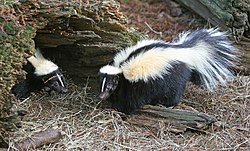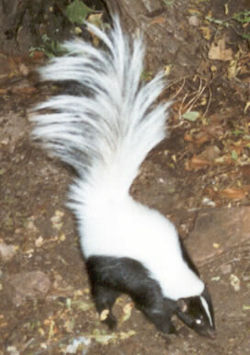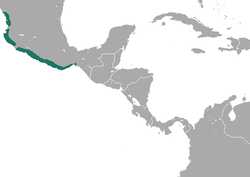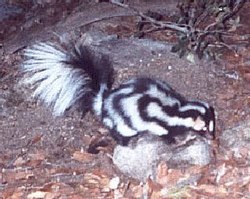
Mephitidae is a family of mammals in the order Carnivora, which comprises the skunks and stink badgers. A member of this family is called a mephitid. The skunks of the family are widespread across the Americas, while the stink badgers are in the Greater Sunda Islands of southeast Asia. Species inhabit a variety of habitats, though typically grassland, forest, and shrubland. Most mephitids are 20–50 cm (8–20 in) long, plus a 10–40 cm (4–16 in) tail, though the pygmy spotted skunk can be as small as 11 cm (4 in) plus a 7 cm (3 in) tail, and some striped skunks can be up to 82 cm (32 in) plus a 40 cm (16 in) tail. No estimates have been made for overall population sizes of any of the species, but two species are classified as vulnerable. Mephitids in general are not domesticated, though skunks are sometimes kept as pets. [1]
Contents
The twelve species of Mephitidae are split into four genera: the monotypic Conepatus , hog-nosed skunks; Mephitis , skunks; Mydaus , stink badgers; and Spilogale , spotted skunks. Mephitidae was traditionally a clade within the Mustelidae family, with the stink badgers combined with other badgers within the Melinae genus, but more recent genetic evidence resulted in the consensus to separate Mephitidae into its own family. [2] Extinct species have also been placed into all of the extant genera besides Mydaus, as well as 9 extinct genera; 26 extinct Mephitidae species have been found, though due to ongoing research and discoveries the exact number and categorization is not fixed.






















